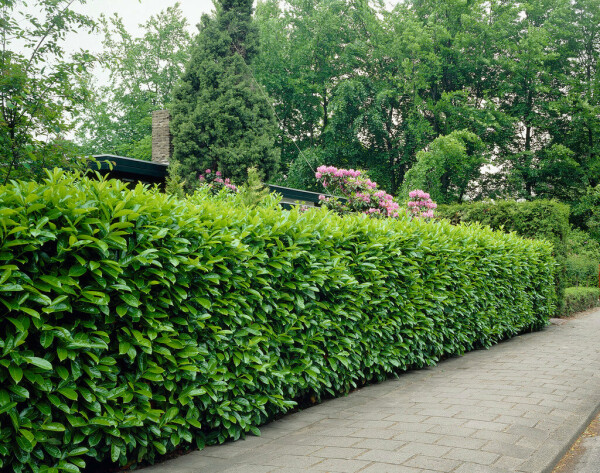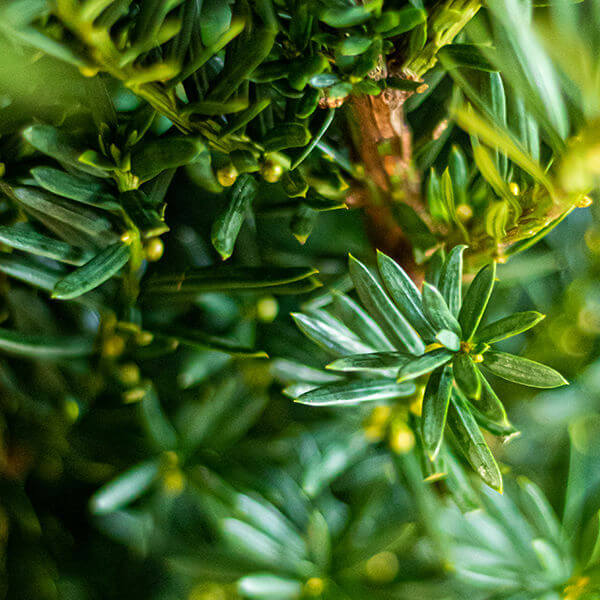Scented Hedging Plants For Fragrant Gardens
Enhance your garden's allure with lavish hedge varieties such as Yew (Taxus), Thuja, Laurel, Photinia, and Bamboo, commemorated for their structural integrity and environmental advantages.
Yew and Thuja provide evergreen protection and winter strength, while Laurel provides rapid development and broad, fragrant leaves.
Photinia includes seasonal beauty with its vibrant red foliage, and Bamboo provides a low-maintenance, serene ambiance.
These hedges enhance air quality, reduce noise, and create tranquil, private areas.
Proper planting, spacing, and maintenance make sure energetic growth and eco-friendly consistency.
Explore how these lush ranges can elevate your garden's charm and well-being.
Key Takeaways
Change Your Garden With Lush Hedge Ranges
- Select Yew for its dense, evergreen growth and unrivaled longevity.
- Select Laurel for its quick growth and broad leaves, guaranteeing quick personal privacy.
- Pick Photinia for its lively seasonal foliage, which turns a striking dark red.
- Make use of Bamboo for a low-maintenance, winter-hardy hedge with aesthetic appeal.
- Space plants 2-3 per meter and prune regularly for optimum growth and health.
Popular Hedge Plants
When transforming a garden with rich hedge varieties, it's necessary to think about popular hedge plants such as Yew, Thuja, Laurel, and Photinia due to their special attributes and benefits.
Yew (Taxus) is extremely esteemed for its durability and dense, green development, making it a prime option for enduring landscapes.
Thuja is kept in mind for its evergreen foliage and robust winter strength.
Photinia adds seasonal vibrancy with red leaves that darken in time, developing dynamic visual appeal.
Laurel uses fast development and aromatic, broad leaves, suitable for quick personal privacy.
Additionally, Bamboo is an outstanding option for ambiance, providing a low-maintenance, winter-hardy option that enhances the garden's visual with its stylish, swaying walking sticks.
These choices cater to a variety of horticultural requirements and choices.
Advantages of Garden Hedges
Garden hedges offer a plethora of advantages, making them an important addition to any landscape. These natural barriers are cost-efficient to implement and provide significant wind security, improving air circulation and contributing to sound decrease. The thick foliage of hedges like Thuja and Beech makes sure personal privacy by obstructing visibility, creating a secluded and peaceful environment.
Hedges also play an essential role in microclimate regulation, supplying a stable environment that fosters plant growth and lessens temperature level variations. Their intricate leaf structures filter contaminants, improving air quality and adding to a much healthier garden community.
Moreover, hedges stand out in noise reduction, soaking up and deflecting sound waves to lower ambient sound levels. This dual functionality of offering both visual and acoustic personal privacy enhances the total tranquility and aesthetic appeal of any garden.
Planting and Upkeep Tips
For a successful hedge, precise preparation of the planting area is essential. Make sure the soil has proper pH and drain to support strong root advancement.
Space the plants appropriately for the picked types. Water the hedge frequently during its preliminary development phase, adjusting as required with seasonal modifications.
Implement a methodical pest control and illness avoidance method, utilizing chemical or natural treatments when required. Routinely check for aphids, termites, and fungal infections.
Apply mulch to keep wetness and reduce weeds. Seasonal pruning promotes dense growth and air blood circulation, essential for plant health.
Following these standards will assist you cultivate a dynamic, properly maintained hedge that enhances the beauty of your garden.
Spacing and Trimming Standards
Spacing and Trimming Guidelines
Correct spacing and trimming are vital for cultivating healthy, aesthetically appealing hedges. Sufficient spacing ensures each plant gets adequate nutrients, light, and air flow.
Follow these guidelines for optimal hedge upkeep:
- Spacing: Position hedge plants 2-3 plants per meter to motivate robust growth.
- Pruning Strategies: Regular pruning is essential for preserving desired hedge height and shape. Trim brand-new growth in summer season and cut back older wood during winter.
- Seasonal Care: Adjust trimming schedules and techniques according to seasonal requirements to ensure plant health.
- Hedge Height: Frequently monitor and trim to maintain the desired hedge height and accomplish uniform looks.
Abiding by these actions will ensure your hedge prospers, improving both the appeal and performance of your garden.
Selecting the Right Hedge
Choosing the Right Hedge
Selecting the appropriate hedge involves evaluating aspects such as mature height, foliage density, and ecological durability. Successful hedge plant choice needs understanding each types' development characteristics and site-specific flexibility.
For instance, Yew (Taxus) offers exceptional durability and dense development, while Thuja is notable for its winter season durability. Additionally, thinking about maintenance requirements is important; fast-growing species like Laurel or Privet need regular trimming, whereas low-maintenance options like Bamboo or Ivy may be more suitable for those looking for minimal maintenance.
Environmental aspects such as soil type, light availability, and wetness conditions should likewise assist the selection procedure. This careful technique ensures the selected hedges will grow, offering both practical and aesthetic advantages to the garden landscape.
Delivery and Planting Advice
To guarantee your hedge plants thrive, they must be provided by specialized couriers and planted quickly upon arrival.
Follow these necessary steps for successful planting:
- Soil Preparation: Improve the soil with raw material to enhance drain and nutrient material.
- Planting Depth: Create a trench twice the width and equal to the depth of the root ball.
- Watering Methods: Water thoroughly after planting, keeping the soil regularly wet but not filled.
- Mulching: Apply a layer of mulch to retain moisture and reduce weeds.
Client Assistance and Service
Offered the essential role of timely assistance in horticultural pursuits, our customer support team is available six days a week through telephone, e-mail, and social media to use skilled advice and promptly address any concerns. Their dedication to quick reaction times makes sure customer complete satisfaction by resolving inquiries associated with plant health, optimum planting techniques, and upkeep schedules.

-------------------
Within 24 hours
This thorough support group, enhanced by an excellent 9.3/ 10 customer ranking, highlights our dedication to enhancing the gardening experience for each client.
Frequently Asked Questions
The Length Of Time Does It Consider Hedge Plants to Develop?
Hedge plants usually require one to 3 years to become completely developed, with the specific duration varying by types and growing conditions.
Reliable care throughout this crucial period is vital for robust development. Consistent watering, vigilant weed control, and suitable fertilizer application are essential in promoting strong root advancement.
For instance, fast-growing species like Laurel may develop quicker, while slower-growing varieties such as Yew may take longer. Diligent upkeep speeds up the establishment procedure, resulting in healthy and dense hedges.
What Are the very best Hedge Plants for Privacy?
The concern of the best hedge plants for privacy involves assessing evergreen and deciduous options.
Evergreen hedges like Thuja, Laurel, and Cypress offer year-round coverage, guaranteeing continuous privacy.
In contrast, deciduous hedges such as Beech offer seasonal personal privacy, shedding leaves in chillier months.
Key maintenance ideas for personal privacy hedges consist of routine trimming, fertilizing in spring, and correct spacing-- typically 2 to 3 plants per meter.
Additionally, constant watering and thorough weed elimination are essential for promoting healthy, dense growth.
Can Hedge Plants Bring In Wildlife to My Garden?
Yes, hedge plants can bring in wildlife to your garden by providing essential advantages like shelter, food, and nesting sites, consequently improving regional biodiversity. Yew, holly, and laurel are excellent for drawing in birds, while ivy supports a range of insects.
Nevertheless, it's crucial to note that there are some downsides, such as increased maintenance to manage bugs and routine upkeep. Carefully picking and keeping hedge varieties can help stabilize these drawbacks and advantages, ultimately fostering a sustainable and dynamic community in your garden.
Exist Any Blooming Hedge Plants Available?
Yes, there are flowering hedge plants readily available that can improve the charm of your garden.
For instance, Elaeagnus, also referred to as Olive Willow, produces aromatic white flowers in the fall, including a touch of beauty.
Photinia, another popular option, showcases vibrant red leaves that grow into a rich green, creating a dynamic visual result throughout the seasons.
To ensure these plants flourish, it's necessary to practice appropriate pruning methods and seasonal maintenance, such as trimming brand-new development in the summer season and cutting down in the winter.
These measures will help keep the health and visual appeal of your flowering hedges.
How Do I Avoid Pests in My Hedge Plants?
To avoid bugs in hedge plants, employ natural insect control methods and keep proper hedge care. Introduce advantageous insects like ladybugs, which victimize harmful insects, to develop a well balanced environment.
Regularly check your hedges for signs of problem and immediately get Browse this site rid of any affected parts to avoid the spread. Guarantee the health of your hedges by using well balanced fertilizers and supplying sufficient water.
Use mulching to maintain soil moisture and appropriate spacing to lower plant tension and promote robust growth. These practices jointly assist in reducing bug problems and preserving a healthy hedge.
Conclusion
In essence, selecting the ideal hedge ranges such as Yew, Thuja, and Laurel can transform any garden into a serene sanctuary. These plants offer year-round greenery, improve visual appeal, and offer useful benefits like noise reduction and wind security.
Correct planting strategies, accurate spacing, constant watering, and seasonal trimming are crucial for ideal development.
Dependable shipment services and professional customer assistance ensure a seamless experience from purchase to planting, making it easier than ever to elevate your outdoor area.
Garden hedges offer a plethora of benefits, making them an important addition to any landscape. These natural barriers are affordable to carry out and provide significant wind security, boosting air circulation and contributing to sound reduction. The thick foliage of hedges like Thuja and Beech guarantees privacy by obstructing exposure, developing a serene and remote environment.

Pruning Techniques: Routine pruning is necessary for preserving desired hedge height and shape. Trim brand-new growth in summer and cut back older wood throughout winter.